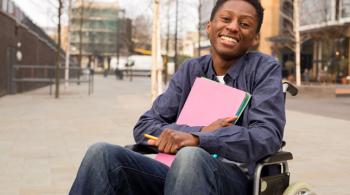December 24, 2017

Kate Seidl is the current principal of City Neighbors Charter School, a public progressive k-8 school in Northeast Baltimore that utilizes arts integration, project based learning, and Reggio Emilia inspiration as elements of their student-centered pedagogy that sees all children as competent, creative and worthy of the deepest respect. Kate is a graduate of Johns Hopkins University program for Administration and Supervision, Bank Street College of Education and Brown University. Her arts integration training includes Harvard University's The Arts and Passion Driven Learning Institute and Project Zero Classroom, Maryland Artists and Teachers Institute, Young Audiences Teaching Artists Institute, and Arts Every Day collaboration.
LC: Your school uses arts integration as one of its guiding pedagogical practices and philosophies. How was this approach decided upon at your school?
KS: Our school opened its doors in 2005 after two years of thought, discussion and planning took place by a founding group of parents. The co-creators of the school sought to answer the question, “If we could imagine the best school, what would it be?” By design the school has combined student driven pedagogies – arts integration, project based learning and Reggio Emilia inspiration –to provide multiple pathways for students to explore questions and ideas, learn and express their learning.
LC: In your experience, what are the benefits of arts integration?
KS: We are amazed by the ways arts integration reveals a child’s competence, both to others and to themselves. In many ways, we are better able to assess what kind of understandings students have developed by their artistic investigation or expression. Students enjoy performing or creatively investigating academic concepts – from singing multiplication rules to drawing characters, to puppet shows of food webs – it is highly motivating for students to combine the arts and academics. Socially, students look at one another differently when they have made something – from song to sculpture, arts are a means for collaboration and for appreciating individual strengths. Arts integration is often a reminder that there are many paths to an outcome, and each creative mind can find a way there.
LC: Do teachers in your school come to their work with experience in arts integration?
KS: Only rarely. Most of our classroom teachers seek out professional development in arts integration whenever possible. General and special educators receive little training in planning to present and teach material using the arts, so it’s most often on-the-job training. We offer professional development in these areas annually at our City Neighbors Network Symposium and in-house on professional development days. As members of Arts Every Day, a local non-profit focused on arts integration, we also have the opportunity for networking and professional development. Our arts resource teachers act as coaches and collaborators for arts integration. Most of our teachers rotate through Maryland Creative Classrooms MC3 (formerly Maryland Artists and Teachers Institute (MATI), spending a summer week focusing on integrating a particular art form- from dance to theater to poetry to puppetry. We have also been lucky to have Masters in Teaching students from the Maryland Institute College of Art (MICA) at our school who come with very fresh ideas for integrating the arts in all subject areas.
LC: What are some examples of ways your teachers have integrated the arts into the academic curriculum?
KS: It has really become an every day sort of learning and is extremely adaptable. Kindergarten students walk around the neighborhood and sketch the different houses and buildings they see. In first grade, students use painting easels to paint leaves. Second graders create radio plays with sound effects of versions of fairy tales they have read. Fourth graders use close observation of classroom animals and combine the learning about adaptation with giant puppetry- winding up with a 14-foot chameleon with a prehensile tail. By sixth grade, the science teacher may offer students the chance to choose poetry, theater or dance to express understandings about water. In a small way, teachers may ask students to create a tableau from a read aloud or book club book, and then ask the actors to speak as characters and then reflect on the multiple perspectives presented.
Our early elementary hallway houses a prime example of first graders studying social studies through the arts. There is a cut paper map of about 10 feet by 12 feet, showing a community and its layout. There are detailed cut paper collages of churches, synagogues, schools and barbershops. Over about four months, the class went to various trips, for example to the Top of the Trade Center in downtown Baltimore and sketched the views, came back and had many discussions about where airports and farms are in relationship to neighborhoods and developed this thoughtful city plan that they fleshed out with art. Along the way, of course, their skills with illustration, cutting, gluing and scale were all developed along with their geography and social science skills. Not to mention social negotiation and listening!
LC: For schools interested in infusing the arts into their curriculum, what advice do you have for getting started?
KS: Start small and build on success. Consider something you do frequently, like reading a poem, and infuse art into it- maybe with movement that conveys the images of the poem, or instruments like egg shakers or a xylophone. Later, larger, or longer projects will occur to teachers, especially if there is time to plan and collaborate with other colleagues who want to give it a try.
Remind teachers that this is about student learning, not teachers being highly developed artists. Teachers need not disparage their own artistic skills, but learn right along with students.
LC: Is there anything else you’d like for educators to know about Arts Integration?
KS: Arts integration is very freeing for both teacher and student. Implied within this kind of student driven teaching and learning is a basis for real respect for other minds and a belief in natural curiosity and drive for communication. Arts integration can develop a community that appreciates others in profound ways.















